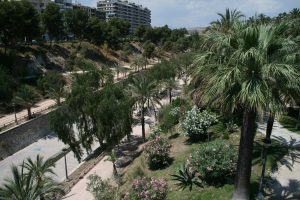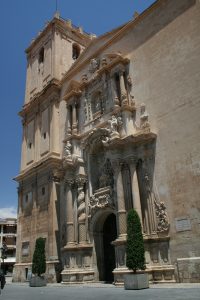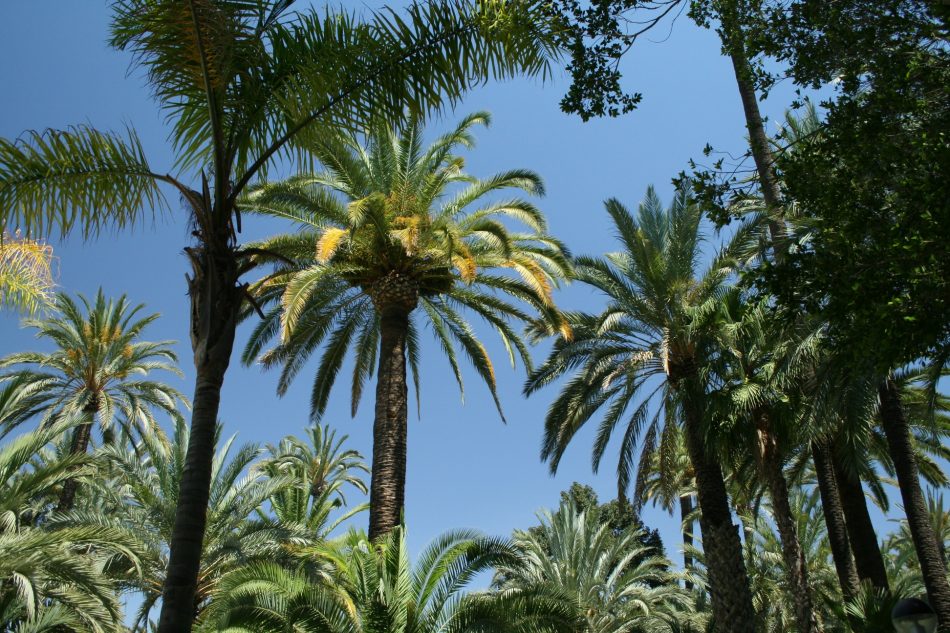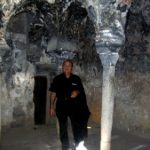Also known as the City of Palms, Elche- or Elx in the Valencian dialect- is becoming an increasingly popular holiday destination.
Elche is situated in Spain’s Costa Blanca region, approximately 23km inland from Alicante. A regular train service connects the two cities, and there are good motorway links to Torrevieja and Cartagena. It is situated conveniently close to two airports- the recently renamed Alicante-Elche airport and Murcia.
Elche is best known for its extensive palm groves- the Palmeral de Elche, declared a World Heritage Site by UNESCO in 2000. The palm groves consist of more than 200,000 trees and help give the city its exotic feel.
The vast scale of Elche’s groves can only be truly appreciated from above- climb the ancient stone steps to the top of the bell tower of the Basilica de Santa Maria and admire the view. Watch your step though as the staircase is very narrow and steep in places!
Follow this exertion with a leisurely stroll through the palm groves found throughout Elche. The impressive Imperial Palm with seven branches growing from one trunk can be found in the Huerto del Cura (The Priest’s Garden). If this sounds too much like hard work, catch the little tourist train and explore the main sights at a more leisurely pace.
Feeling thirsty? Elche has many places to eat and drink, serving traditional tapas or locally sourced seafood whilst you relax and watch the world go by.With its temperate climate, Elche is ideal for both summer getaways and winter breaks, although August is festival time and can be very busy. The Mystery Play of Elche is held in the Basilica in August and there are lots of festivities around this, including fireworks and street processions. Like the palm trees, the play has been recognised by UNESCO and has been performed since the 15th Century. The Play depicts the death of the Virgin Mary and her ascent to heaven and is sung by a 300 strong choir.
History buffs will love the archaeological site of La Alcudia, just south of Elche. This was the original site of the city in the Neolithic period, and it was here that an elaborate stone bust, known as the Dama de Elche (Lady of Elche) was found. Also worth exploring is the Palacio de Altamira, built during the 12th and 13th centuries, situated near the centre of the city. It has functioned as a town hall and a prison during the Spanish Civil War, and now houses the Archaeology and History of Elche Museum, where a replica of the Dama de Elche can be seen.
If sunbathing is more your style, take the bus or fifteen-minute drive to Elche’s coastline and discover its excellent beaches, five of which have been awarded Blue Flag status. The coast line is divided into two parts, the Altet and the Marina. The Altet has two main beaches; the El Arenals del Sol and El Carrabassi, whilst the beaches of the Marina- El Pinet La Marina, Les Pesquers and El Rebollo- are surrounded by pine trees and sand dunes.A large part of Elche’s economy comes from its footwear industry, and there are over 1000 shoe factories around the city, many of which are open to the public including the Salvador Artesano, one of the biggest shoe outlets in Europe- plenty of opportunities to grab a bargain! If you’re not completely shopped out, the Centro Comercial Abierto Shopping Centre in the city centre offers more than a hundred shops and stalls. If you’re in need of more refreshment you can purchase ripe pomegranates or fresh dates direct from Elche’s palm trees.
Visit http://www.visitelche.com/en/ for more information on visiting Elche, accommodation, planning your trip and much more.











Very good article & photos, Steph. We enjoyed all the informaton a lot and made notes for our next trip to Spain – maybe in spring 2019 so we can include the “City of Palms,” in our travel itinerary. Thank you.
M&G
NYC